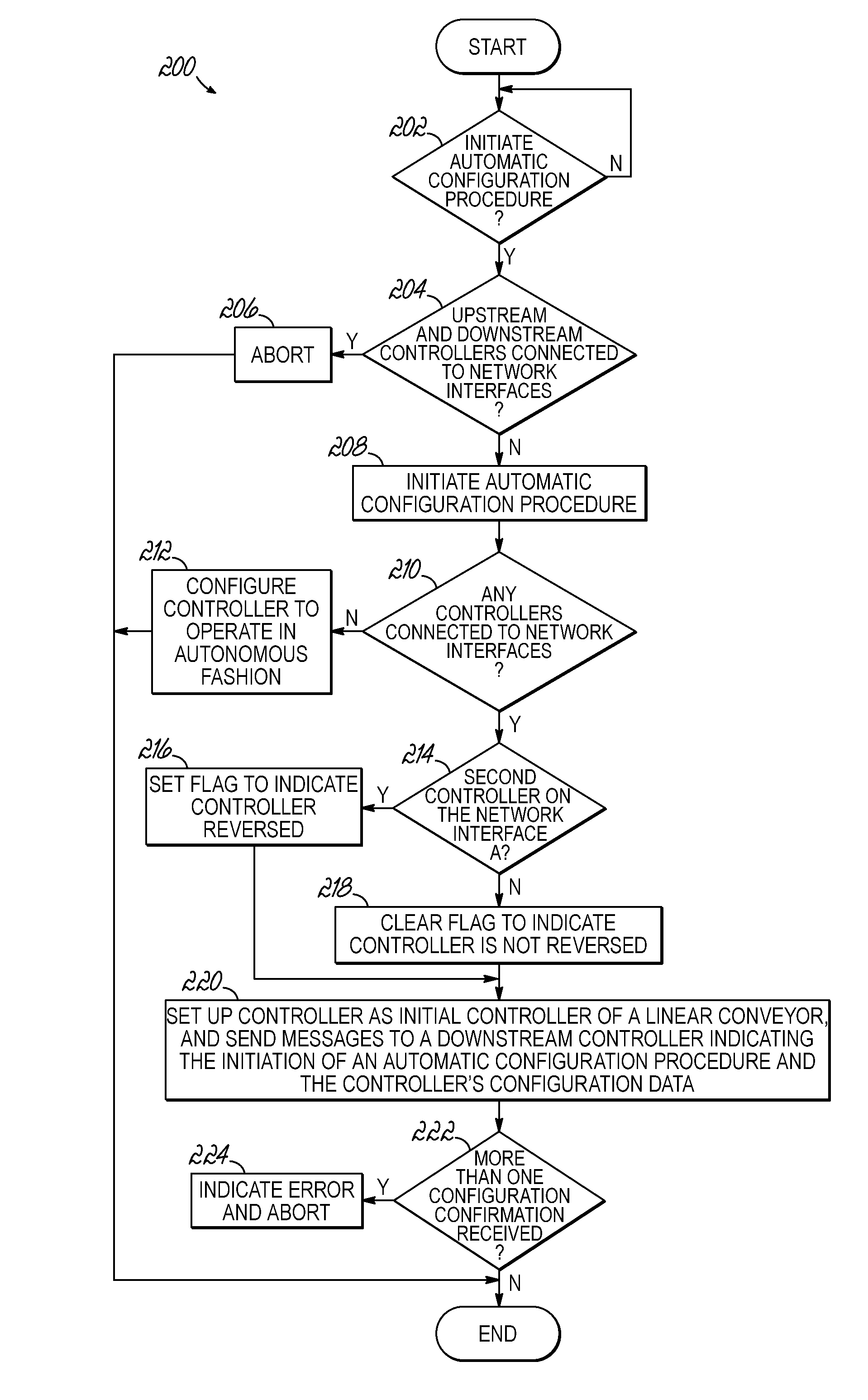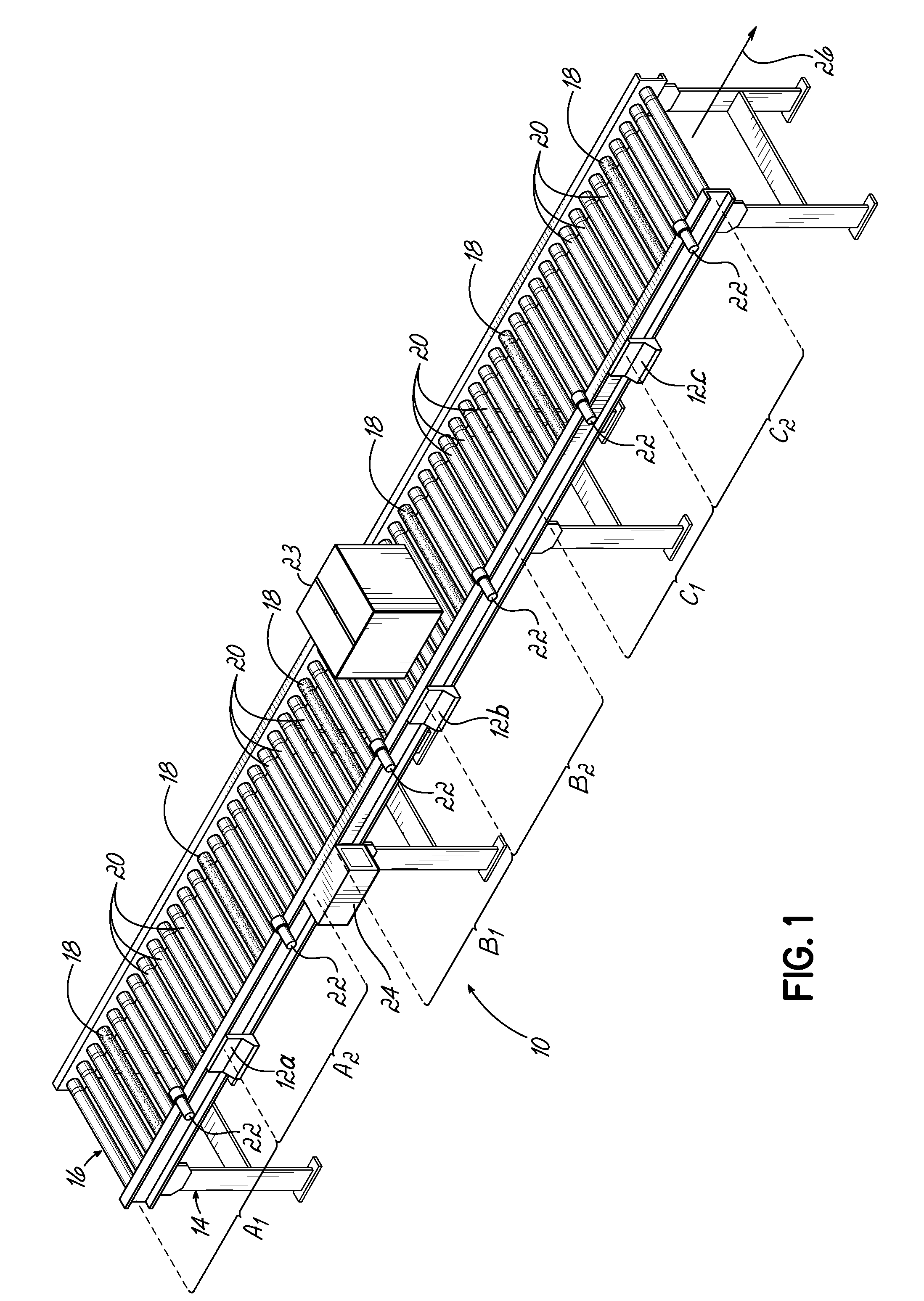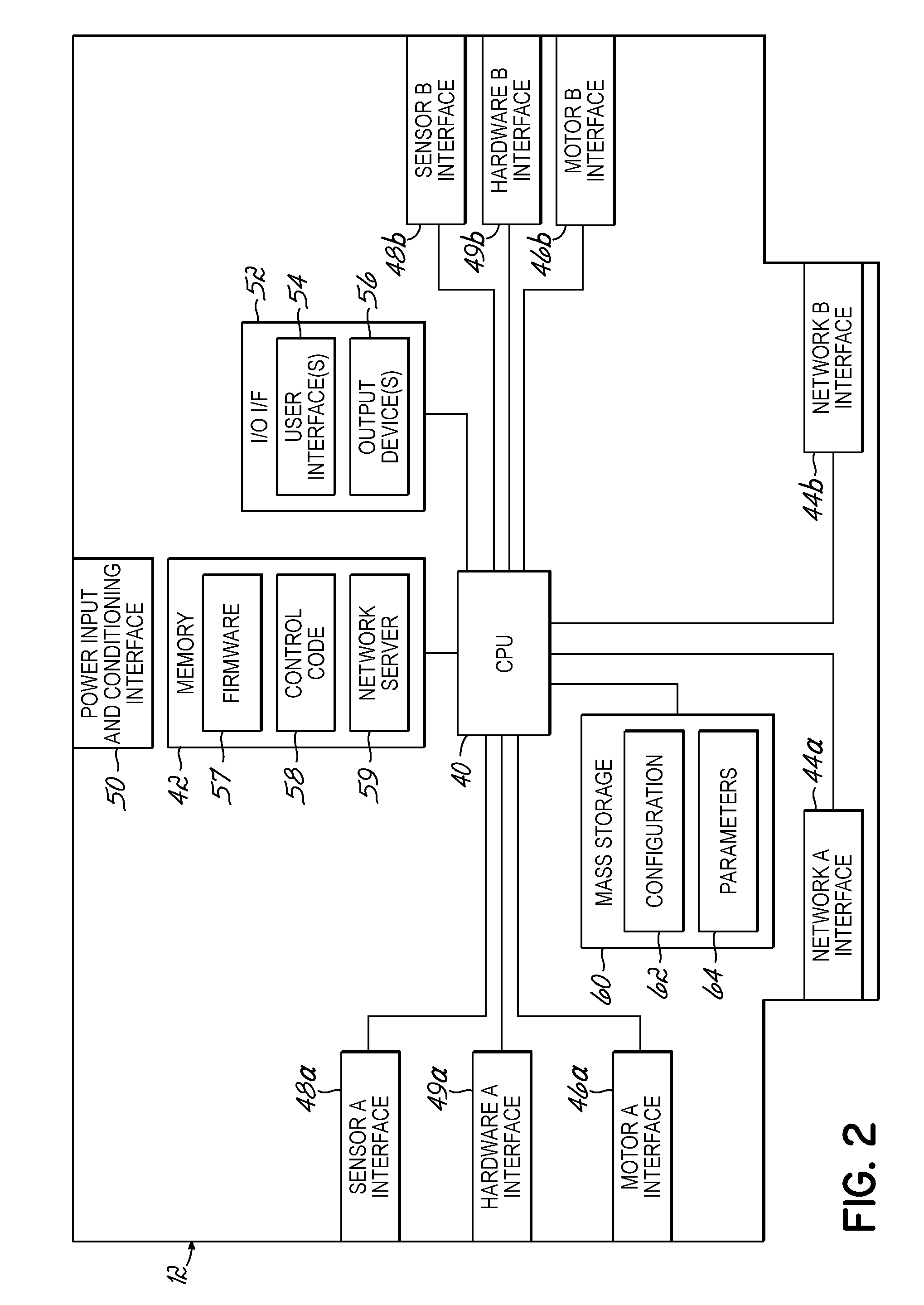Conveyor controllers
a conveyor system and controller technology, applied in the field of conveyor controllers, can solve the problems of inability to discern additional information, inability to advance control the feedback capability of conventional controllers, and inability to track different sized articles
- Summary
- Abstract
- Description
- Claims
- Application Information
AI Technical Summary
Benefits of technology
Problems solved by technology
Method used
Image
Examples
Embodiment Construction
[0044]FIG. 1 is a perspective illustration of a portion of a conveyor system 10 that uses one or more modular conveyor controllers 12a-c consistent with embodiments of the invention. In particular, the illustrated portion of the conveyor system 10 includes a conveyor assembly 14 which in turn includes a conveyor belt 16 that has motorized rollers 18 interspersed with non-motorized rollers 20. The conveyor assembly 14 further includes a plurality of sensors 22 and a power supply unit 24. The sensors 22 are configured to detect the presence or absence of an article 23 conveyed on the conveyor assembly 14, while the power supply unit 24 is configured to provide power to one or more modular conveyor controllers 12, the motorized rollers 18, and / or the sensors 22.
[0045]As illustrated in FIG. 1, each modular conveyor controller 12 (referred to hereinafter as “controller”12) interfaces with and / or controls up to two motorized rollers 18 and up to two sensors 22. As such, each controller12 ...
PUM
 Login to View More
Login to View More Abstract
Description
Claims
Application Information
 Login to View More
Login to View More - R&D
- Intellectual Property
- Life Sciences
- Materials
- Tech Scout
- Unparalleled Data Quality
- Higher Quality Content
- 60% Fewer Hallucinations
Browse by: Latest US Patents, China's latest patents, Technical Efficacy Thesaurus, Application Domain, Technology Topic, Popular Technical Reports.
© 2025 PatSnap. All rights reserved.Legal|Privacy policy|Modern Slavery Act Transparency Statement|Sitemap|About US| Contact US: help@patsnap.com



